Abstract
Cystic fibrosis was present in 35 of 5,265 first cousins of index cases with the disease. The gene frequency was estimated to be .0281 +/- .00544, using an improved method that allows for the influence of cousin sibship size upon the estimate. This figure is higher than that obtained by direct counting of cases in Victoria, Australia, from 1955-1979 (.0198 +/- .000127), raising the possibility that multiple gene loci may be involved in this disease. Further analysis showed that the number of affected first cousins fitted very well with an expected number based on a model involving two gene loci, each responsible for half the cases of cystic fibrosis. Agreement with expectations based on a single locus was not good. An alternate explanation of gross underascertainment of cases is dismissed because the index sibships were shown to fit very closely a truncate binomial distribution. The gene frequencies at the putative two loci would then each be .0140 and heterozygote frequencies one in 36. One in 18 people would be heterozygous at either one or the other of the loci.
Full text
PDF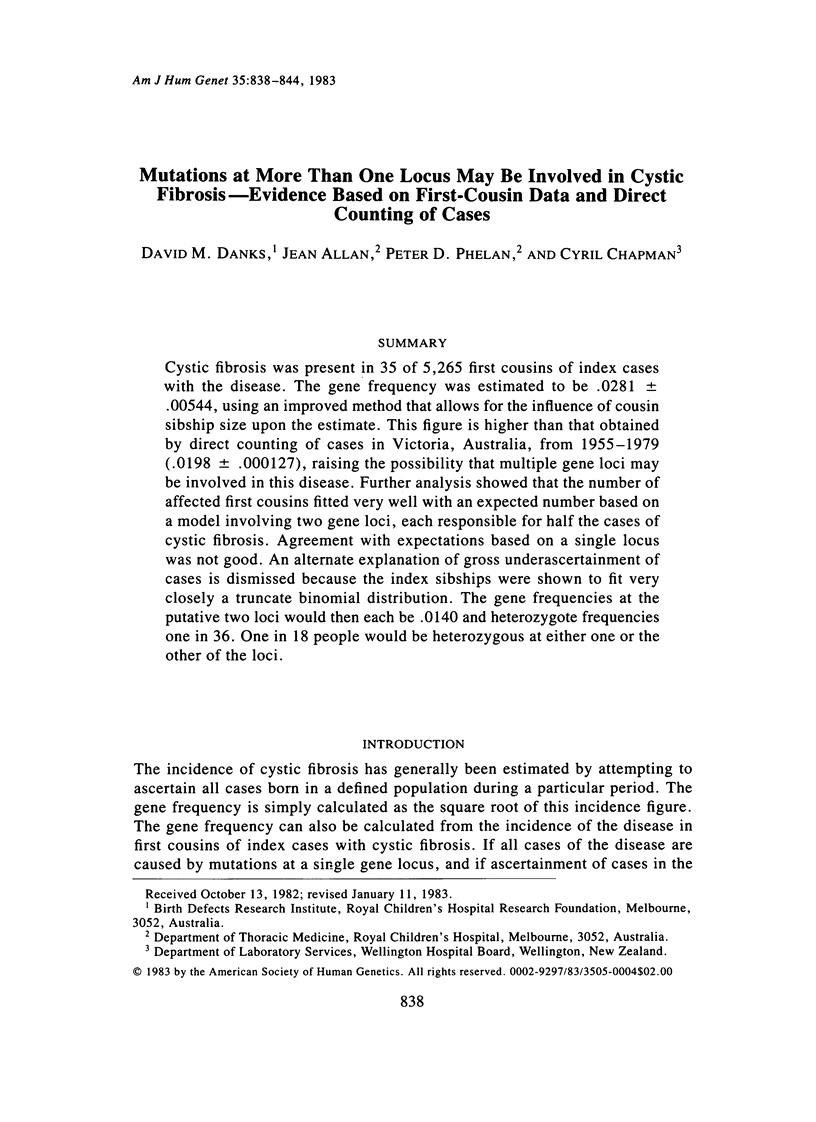
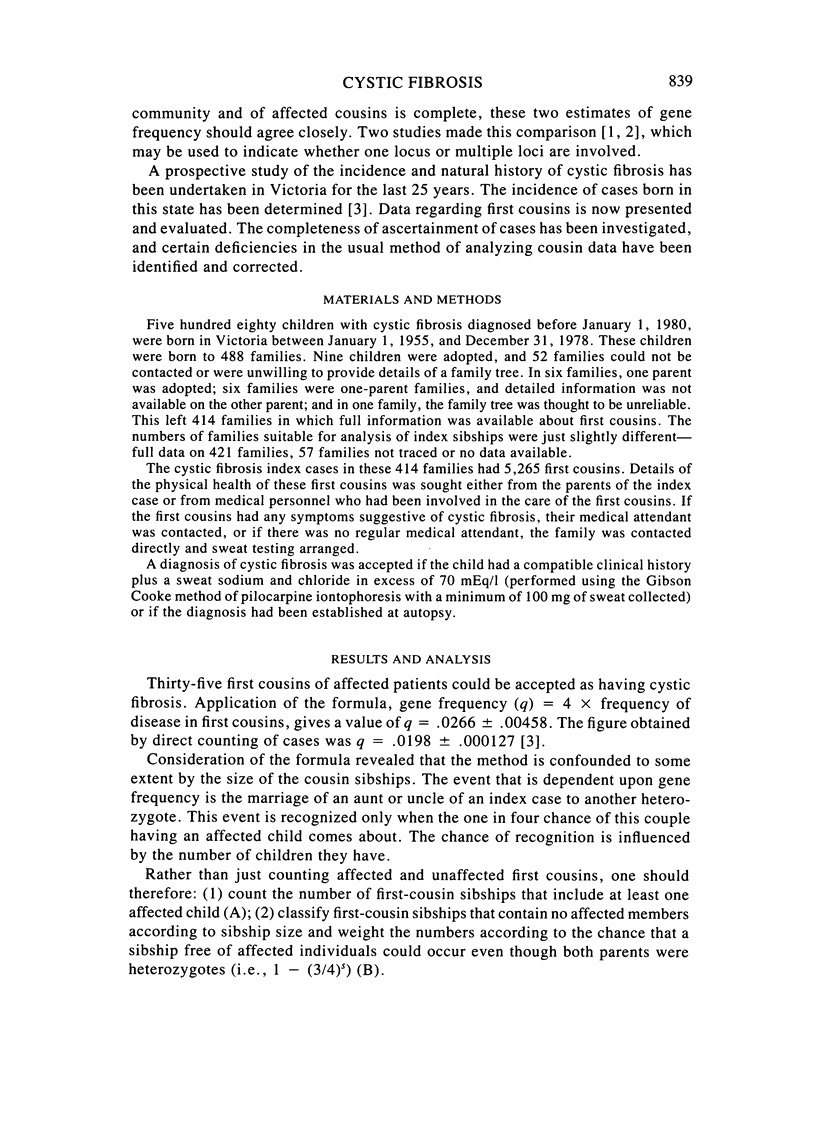
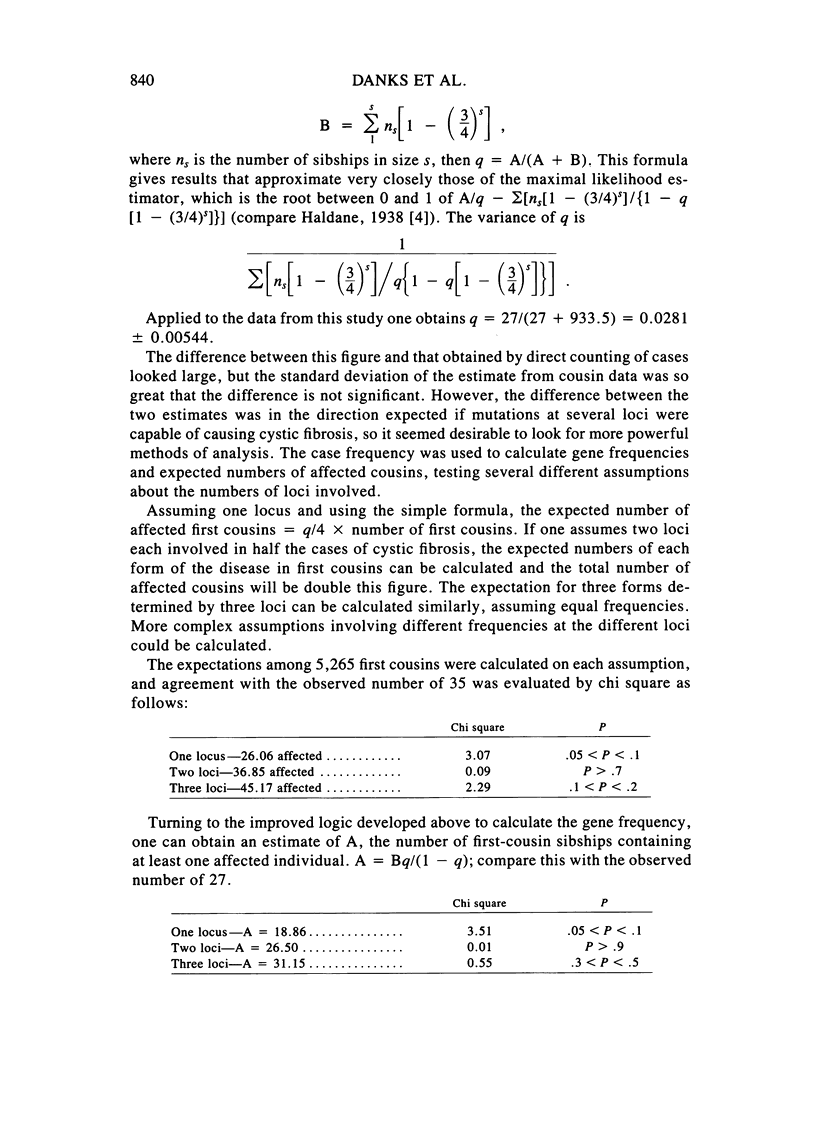
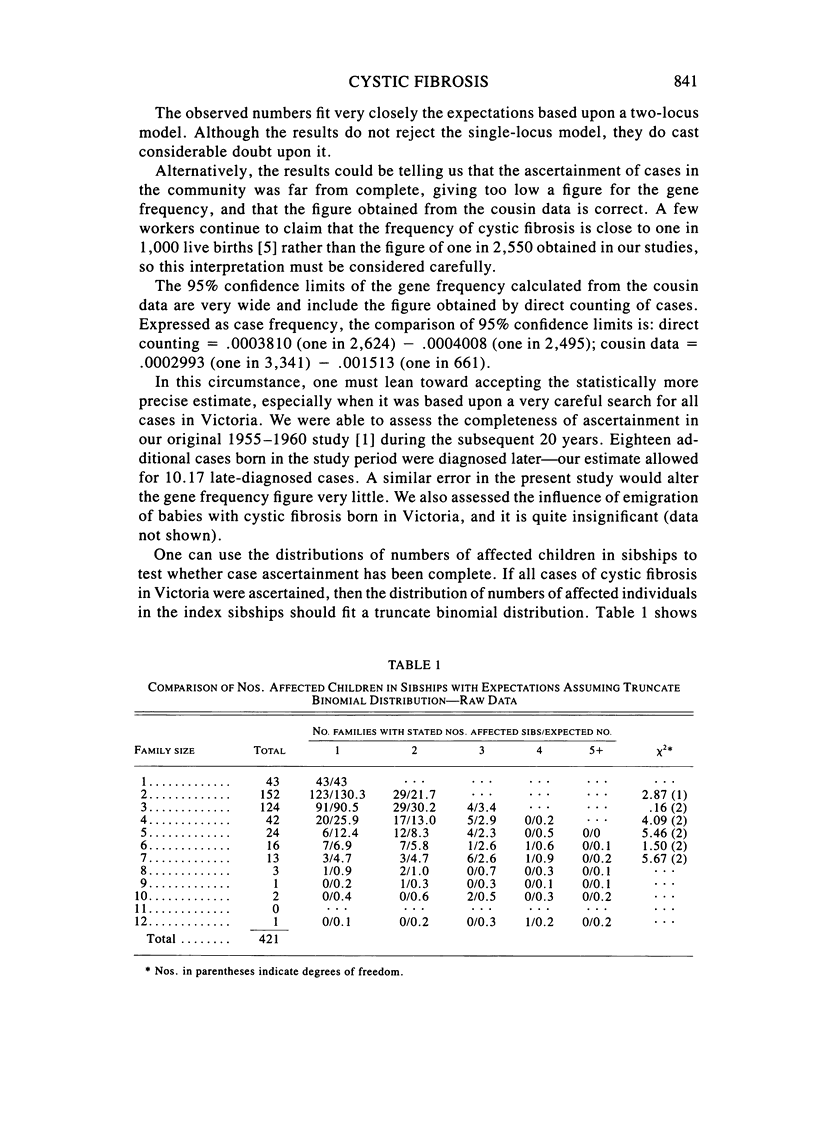
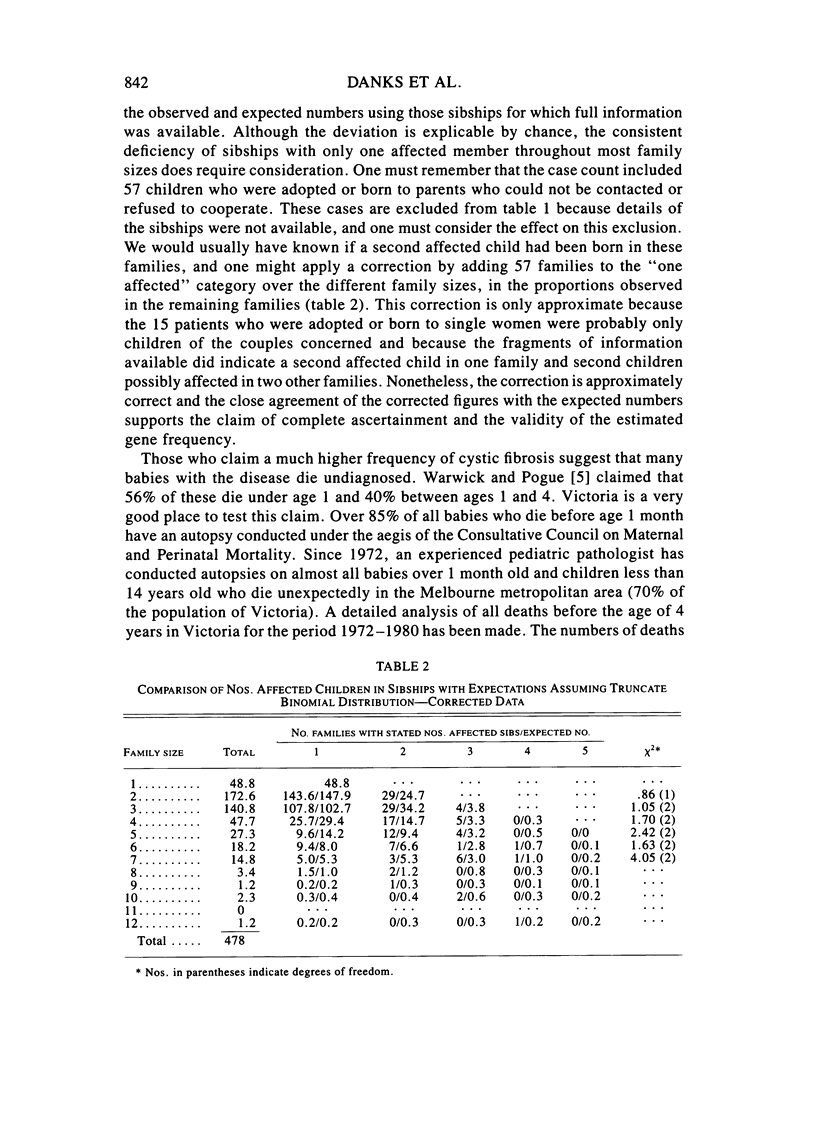
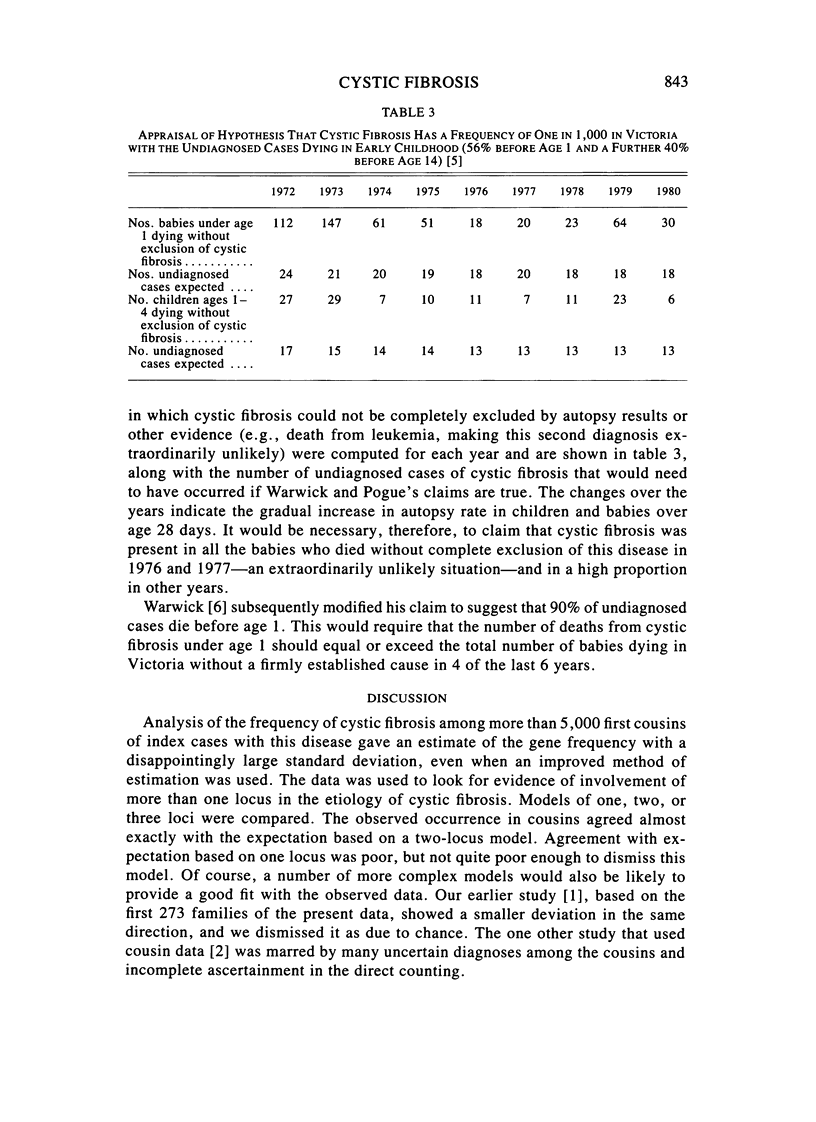
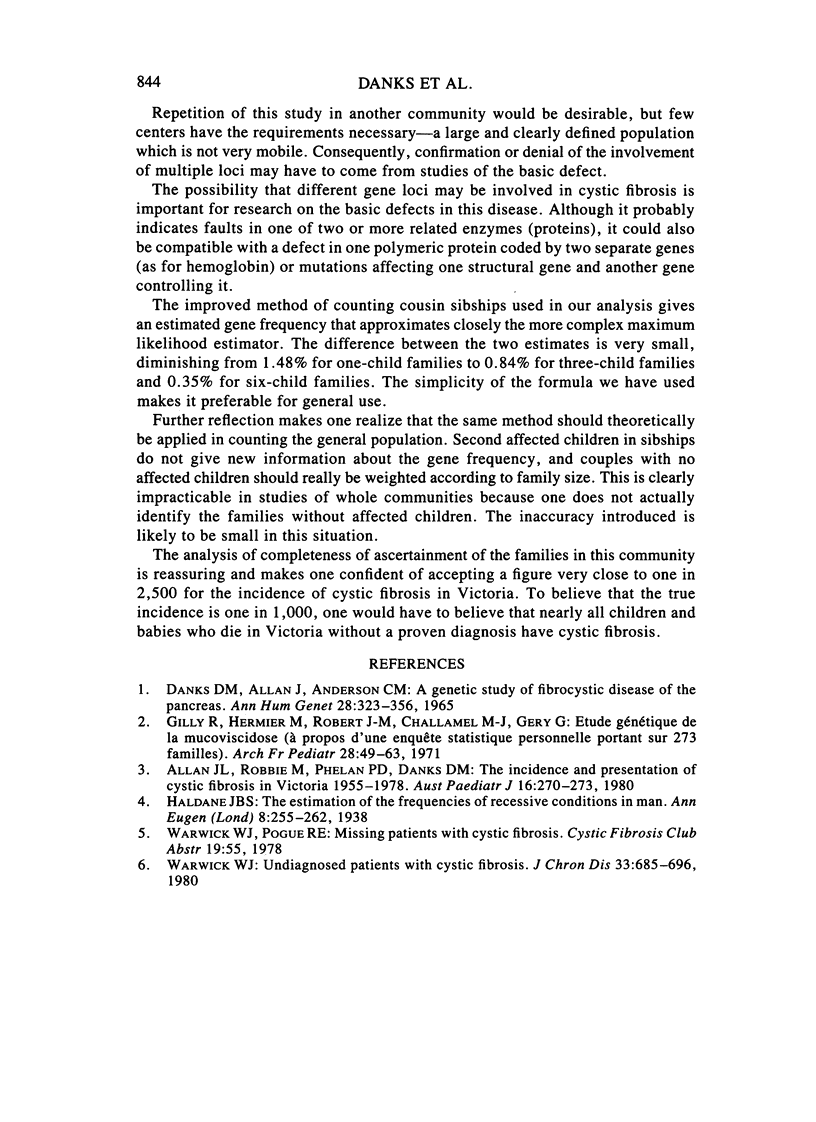
Selected References
These references are in PubMed. This may not be the complete list of references from this article.
- Allan J. L., Robbie M., Phelan P. D., Danks D. M. The incidence and presentation of cystic fibrosis in Victoria 1955-1978. Aust Paediatr J. 1980 Dec;16(4):270–273. doi: 10.1111/j.1440-1754.1980.tb01314.x. [DOI] [PubMed] [Google Scholar]
- Gilly R., Hermier M., Robert J. M., Challamel M. J., Gery G. Etude génétique de la mucoviscidose (a propos d'une enquête statistique personnelle portant sur 273 familles) Arch Fr Pediatr. 1971 Jan;28(1):49–63. [PubMed] [Google Scholar]
- Warwick W. J. Undiagnosed patients with cystic fibrosis. J Chronic Dis. 1980;33(11-12):685–696. doi: 10.1016/0021-9681(80)90055-7. [DOI] [PubMed] [Google Scholar]


